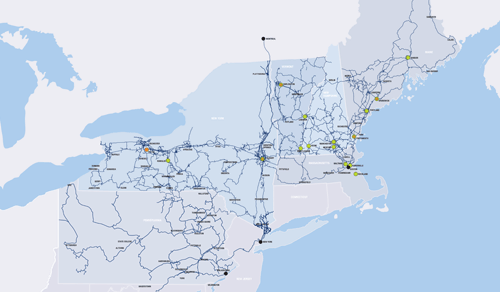When you think about the Internet of Things (IoT) in the context of a business setting, do you picture a large enterprise or a small or medium-sized business? Many of us think of the enterprise. This may be because SMBs have been slow at reacting to IoT compared to enterprise businesses. In fact, one recent surveyfound that roughly twice as many enterprises have deployed IoT compared to SMBs.
There are a number of reasons that SMBs have been slower. For example, some IoT solutions are costly unless you purchase them at scale. Additionally, setting up the infrastructure that allows you to get the maximum benefit of IoT—such as deploying analytics solutions for IoT-generated data—can be costly.
The truth is, though, that IoT offers significant opportunities to SMBs. IoT devices and services enable new operational efficiencies for SMBs. IoT solutions also offer SMBs potential new revenue streams. Here are a number of ways IoT can affect SMB IT budgets.
IoT Products Lower Costs, Boost Productivity
Perhaps the most dramatic effect IoT can have on SMBs is reducing costs by improving operational efficiency. This can take many forms. One basic example is bringing automation into the workplace.
IoT-enabled devices provide an exceptional level of automation. For example, you can remotely power down IoT-connected devices when they are not in use, even if those devices are widely distributed. You can also set an IoT-enabled machine to power down in response to specific, business-defined conditions.
What’s more, machines communicate with other machines in the Internet of Things. As a result, one device can signal another that it is time to power down or power up. Your employees never need to flip a switch, which gives them more time to spend on value-added activities. Therefore, not only can you lower operating costs, but you can also boost productivity—two major advantages for an SMB’s IT budget.
IoT Enriches Product/Service Portfolio
SMBs can use IoT for more than simply improving operational efficiency. SMBs can create IoT products and services of their own. This represents potential new revenue streams and potential new customers.
One real-world example of a small business leaping into the IoT is a company started by two college students. They realized that city waste management services were often wasting time and resources emptying trash bins that were not full. To alleviate this problem, the Massachusetts-based company made the trash bins smart by equipping them with IoT sensors that allowed the bins to notify the trash collectors whether the bins require emptying or not. This allowed the trash collectors to be much more efficient and timely.
Additionally, the way SMBs deliver their products and services to new and existing customers can change dramatically with IoT. A small retailer might encourage customers to connect to its Bluetooth network while in-store. The retailer could then use Bluetooth tracking to identify the path customers take most often through their store and arrange merchandise accordingly. Already, we have seen IoT devices in the form of credit card readers attached to smartphones making huge inroads in SMBs, enabling easy credit card acceptance in a wide range of locations.
Security Concerns Regarding IoT Can Be Mitigated
These IoT opportunities also come with a certain level of risk. Every new IoT device you add to your SMB increases the possibility of a cyberattack by increasing the number of ways into your network. One leading cybersecurity firm named data theft from IoT devices as the second biggest cyber threat to SMBs in 2016.
Consequently, combatting the risk that IoT poses to SMBs requires time, expertise, and resources. The good news is that most of the same measures that help consumers improve IoT security apply to small businesses as well.
The better news is that most of these measures do not come with a hefty price tag. The measures include:
- Ensuring that software is patched and up-to-date on IoT devices.
- Using strong and unique passwords for every IoT device.
- Enabling wireless security on your network.
- Performing regular data backups to mitigate against data loss.
- Educating employees—even a little training can go a long way.
IoT Trends May Affect SMB Budgets in 2017
Although we covered some low- to no-cost ways to beef up IoT security, some SMBs will not be able to avoid IoT security investments completely. With the trend in IoT adoption on the upswing for SMBs in 2017, it will likely be time to tap into outside expertise. SMBs can expect to see some of their IT budgets going toward IoT security. They can also look forward to some cost-saving from embracing IoT as well, and that could help offset the security investment.




















